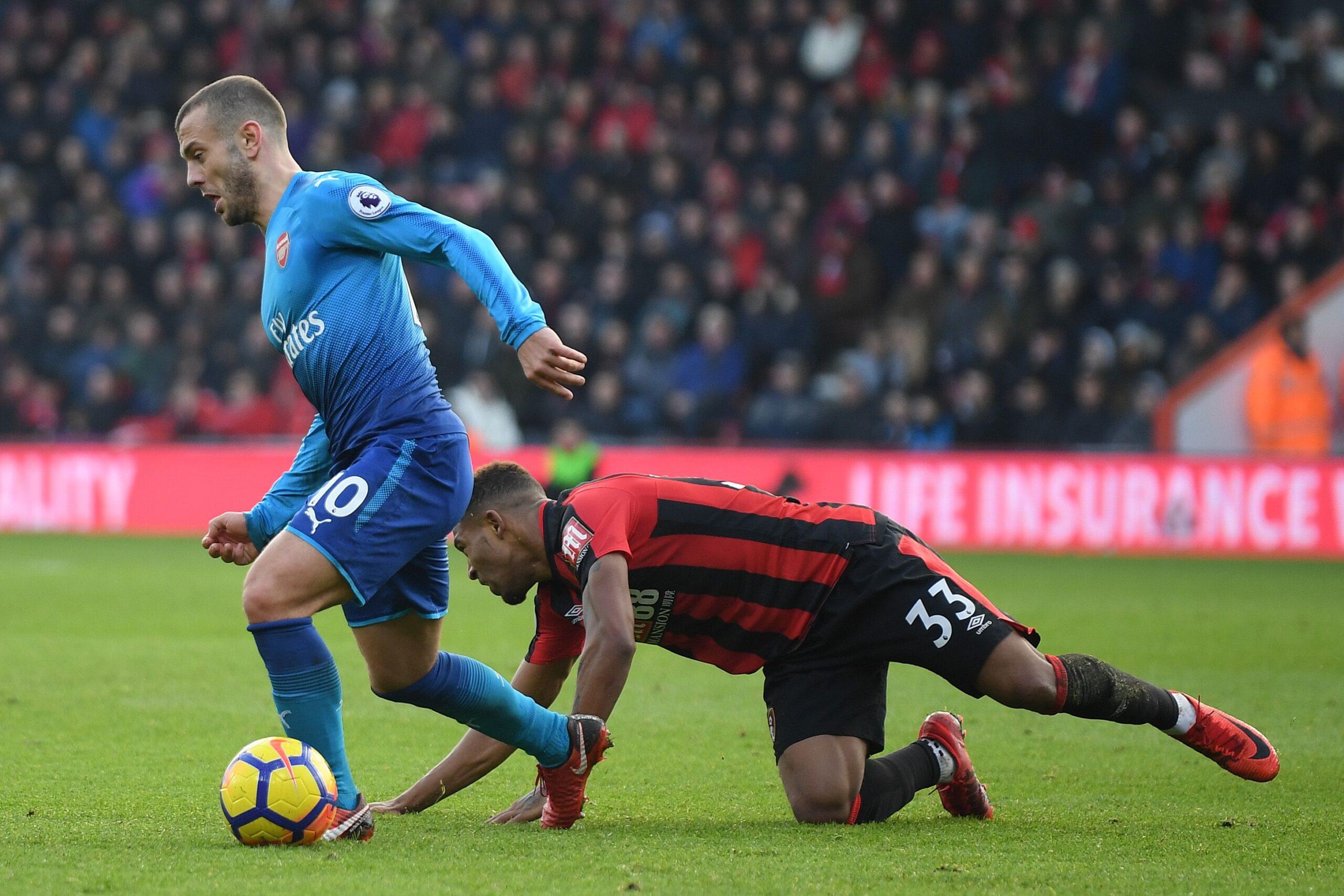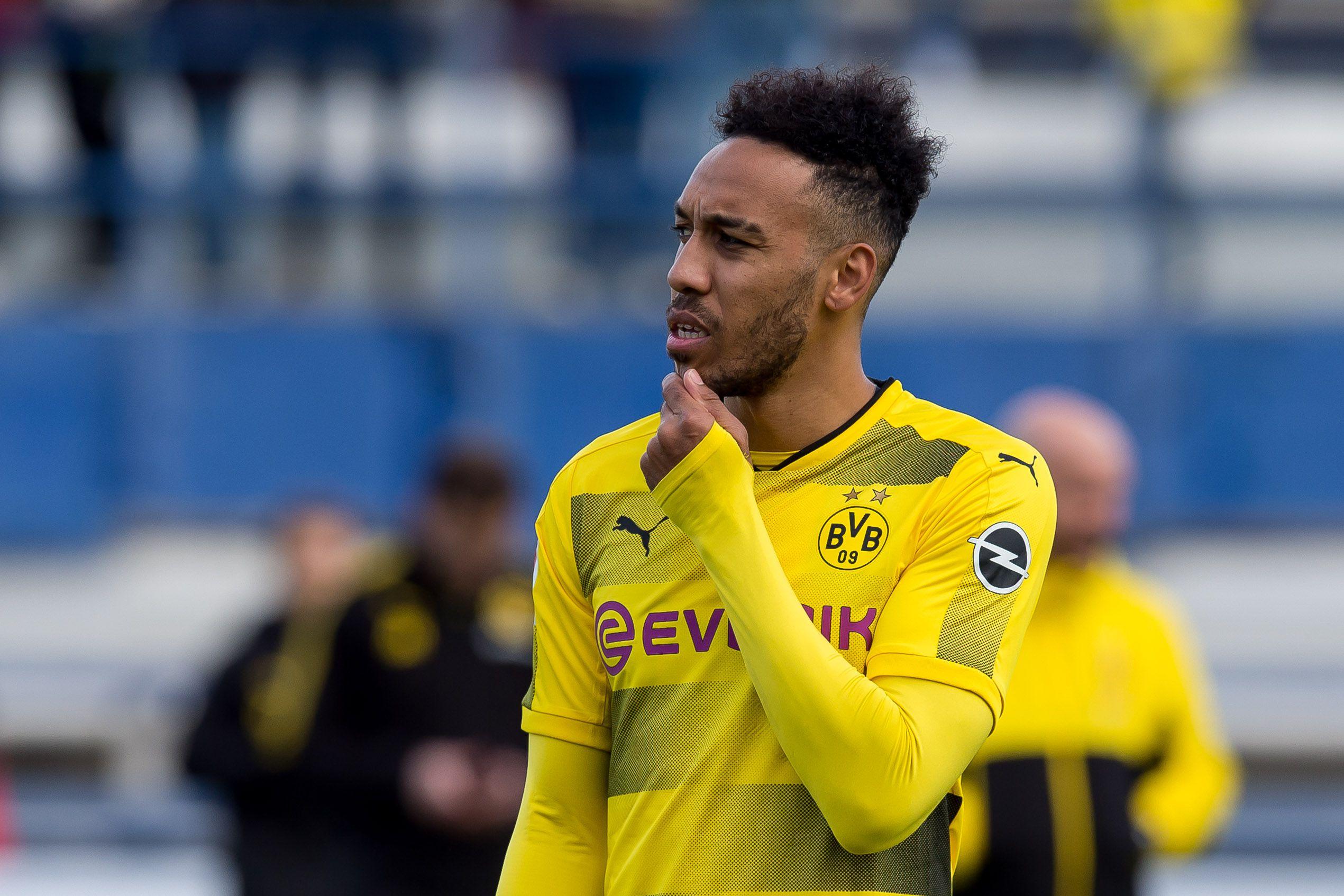
It’s that time of year again. After flickering with promise during autumn, Arsenal’s season is dangerously close to imploding. And perhaps it already has.
After a dour run through December and January in which they won just two out of nine league matches, they now lie on 39 points, eight points away from fourth place in the Premier League and the Champions League qualification that comes with it. To compound their malaise, while Arsenal have faltered, their rivals have not. Across those nine games, Arsène Wenger’s men accrued seven fewer points than any of the five teams above them.
It sure looks like that nine-game stretch could be the decisive run of Arsenal’s season. At the start of that run, they were projected to finish alongside Liverpool and ahead of Tottenham in a close battle for fourth. Now, odds of them landing in the top four have dropped down below 20 percent, but they have rallied from similar positions before. At this same stage during both the 2011-12 and 2012-13 seasons, they were respectively five and four points back from fourth place and had two fewer total points each time. Solid form from there on in saw them land in third place in 2012, and in fourth the following year.
However, sudden improvement doesn’t look like it’s on the cards this year. Primary goal threat Alexis Sánchez is poised to receive a giant pay packet from Manchester United this month, the club has faced a typical mid-winter slew of injuries, and the squad appears more in flux than ever before. After dropping out of top four last season for the first time in 20 years, Arsenal don’t look likely to get back there—now, or anytime soon.
Arsenal came into the season with plenty of uncertainty, and somehow, the situation has gotten even worse. Sead Kolašinac and Alexandre Lacazette were solid summer reinforcements—good quality players entering their prime years—but two big issues still remained unresolved. The team’s best players—Sánchez and Mesut Özil—are on the last year of their deals, and nothing has been done to either 1) retain them or 2) find replacements. Sánchez’s record in goal involvement is superb—126 goals and assists in 166 games—while Özil remains one of the finest creators in the Premier League and an unparalleled talent:
Had retaining the two stars enabled the team to compete at the top of the league, then perhaps eating the transfer fees they could’ve gotten had they sold those stars last summer might’ve been worth it. But that hasn’t happened. Almost every club struggles to replace players of this quality—let alone two of them—and Arsenal have nobody waiting in the wings to step up. There’s no store of talented 21-or 22-year-old attackers that they can promote into the team to cover any forthcoming talent deficit, and so they need to buy. Except, in the current market, even promising-yet-unrealized talents carry top-dollar price tags, and in recent years Arsenal have shown little desire to shop at the higher end of the market. Had they cashed in Sánchez for the reported £60 million Manchester City were willing to pay back in the summer, they could have funded a replacement and already integrated him. Since buying Özil in 2013 and Sánchez in 2014, Arsenal hasn’t really competed in the market for elite talents. Even the club-record £52.7 million purchase of Alexandre Lacazette, which was an answer to the club’s long-term striking issues, could potentially have been concluded a season or two earlier.
In addition to the mixed recruiting record, Wenger seems to have purposefully hamstrung his team’s depth. Alex Oxlade-Chamberlain left for £40 million over the summer and is now scoring goals for Liverpool. Theo Walcott is off to Everton for £20 million after only making six substitute appearances in the league this year, while Olivier Giroud, who’s scored more than ten league goals in each of his five previous seasons at the club, has played just a handful of minutes and made only one league start. Even the departure of Francis Coquelin raised an eyebrow in these quarters—not because he was a player who would provide Arsenal with a long-term starting solution, but because he was 26 years old, and had already made well over 100 midfield appearances for the club. Traditionally, Wenger has been loyal to long-serving players, often retaining them well into their later years, and often beyond their useful regular playing lifespan, but this season he’s started to cut these players loose.
Amid all of the churn, the question becomes: Does Wenger have a vision to retool his whole squad on the fly or are Arsenal now especially underprepared to cope with player departures and faltering health?

A pre-Christmas injury to Aaron Ramsey exposed Arsenal’s lack of depth in midfield while offering an unlikely route back into the first team for former starlet Jack Wilshere. His performances have been feted as one of the few plus points from Arsenal’s poor run, but the circumstances surrounding his future re-emphasize problems at the club. A naturally talented player, Wilshere lost the majority of two seasons to injury before a varied loan spell at Bournemouth last season. As such, he returned to Arsenal’s first team in the same boat as Özil and Sánchez, with an expiring contract and no word of a renewal.
Wilshere also appears a different player at 26 years old than the one who showed such promise against Barcelona in the Champions League as a 19-year-old. It’s possible injuries have taken their toll, and while his passing game remains solid, his attacking impact has waned. He’s creating fewer than one shot per game for his teammates—under half the volume of earlier years. In contrast, with a contribution to nine goals this season in only 1,215 minutes, Ramsey once again looked like a core member of the team, but at 27, and as another player with a checkered injury history, his contract only runs another 18 months through to 2019. Were the squad primed and performing at a high level, a decision to re-sign Ramsey to a new contract might be marginal, but with a slew of departures of key men ahead of that decision, it now may be key to retain him.
In recent weeks, Laurent Koscielny, Nacho Monreal, Özil, and Giroud have all joined Ramsey on the sidelines, and the team that were beaten at Bournemouth featured six changes from the one that, despite eventual defeat, brought an attacking storm to Manchester United’s door just a few weeks ago. Rob Holding, Calum Chambers, Alex Iwobi, and Ainsley Maitland-Niles, none older than 22 years old, have all featured heavily recently, but are they the future of the club or is their recent playing time just emblematic of how weak the squad is overall?
It’s impossible to separate all of the uncertainty within the team from all of the cloudiness behind the scenes. It would be out of character for Wenger to sanction heavy moves in the transfer market, especially in January, but there are new recruits in place to assist that side of operations. Sven Mislintat joined the club from Borussia Dortmund in November as head of recruitment, while former Barcelona man Raúl Senllehí is arriving at the start of February to be the head of football relations. The new front office has already had an impact, as Wenger admitted that young Greek center back Konstantinos Mavropanos was signed on Mislintat’s suggestion. However, while the infrastructure may well be in place for entering a post-Wenger world, the Frenchman certainly hasn’t relinquished final control of football affairs just yet. There was a clear subtext implied in Wenger’s comments upon Mavropanos’s signing that Mislintat and Senllehi would have to work the Arsenal—and Wenger—way. Wenger said that they would have to “adapt to a new environment [and] discover suddenly a different structure” and that, despite Mislintat’s arrival, the club already knew “every single player in Europe before [he] arrived.” Wenger clearly still views a club hierarchy with him at its head.

However, should rumors solidify and Pierre-Emerick Aubameyang arrive from Borussia Dortmund or Henrikh Mkhitaryan emerge from the other side of any Manchester United deal for Sánchez, the Mislintat/Dortmund connection will be hard to refute. Aubameyang has scored at a shade under a goal a game across the last three seasons, while Mkhitaryan’s last season in Dortmund saw him involved in 26 goals from just 28 starts, but they would be Band-Aids rather than long-term solutions. Outside of a flurry of five assists at the beginning of this season, Mkhitaryan has never shown that Dortmund form under José Mourinho at Manchester United. Plus, he turns 29 next week and is almost certainly entering the back end of his peak physical capability. Arsenal would be signing a player—and no doubt at great expense, given Mkhitaryan’s legendarily tough negotiating agent, Mino Raiola—as a reclamation project.
Just six months Mkhitaryan’s junior, Aubameyang would represent a similar gamble, despite having shown elite goal-scoring form consistently during multiple seasons. He has been suspended twice this season for “disciplinary reasons,” and his arrival would cast a huge shadow over the purchase of Lacazette. Aubameyang is a pure goal scorer who doesn’t create for his teammates or particularly help with build-up play. It’s unlikely that both he and Lacazette would fit into the team together—unless Wenger anticipates converting the Frenchman to a wide forward role, which he hasn’t played with any regularity since 2014. Aubameyang isn’t a direct Sánchez replacement, and his arrival could disrupt the team’s record signing. Does that sound like a coherent plan?
More interesting would be the rumored—but currently unlikely—move for Bordeaux’s Malcom, a pacy, exciting 20-year-old Brazilian winger. It would be a lot to expect such a young player to arrive, acclimatize to a new team and new language instantly, and replace the output of a genuine world star such as Sánchez, but it would at least be a step in the right direction. Arsenal simply haven’t signed enough young talents with the talent to develop into genuine stars. Without the progress of Iwobi, who has emerged from the youth ranks to feature regularly in the first team, the senior team would be entirely bereft of youthful attackers.
Having been turfed out of the FA Cup by Championship club Nottingham Forest, Arsenal are now unable to win the trophy that prevented last season from being looked at as an utter failure. After a scoreless first match, the second leg of their Carabao Cup semifinal against Chelsea comes next week. Then they have their round-of-32 tie against Swedish side Östersunds FK in the Europa League, which features an unusually high number (Napoli, Atlético Madrid, and Borussia Dortmund, among others) of top teams this year.
That sums up the decline in Arsenal’s status: hoping to win the second-tier domestic and continental cup competitions. It’s mid-January, and they are closer to Burnley in seventh place than Chelsea in fourth. The top six have been easily superior to the rest of the league across the last two seasons, and those clubs remain richer and better equipped than the rest of the league to deal with modern reality of lengthy campaigns across multiple competitions. For Arsenal, though, the challenge is clear. Right now they are clearly sixth-best, and it’s just not good enough.